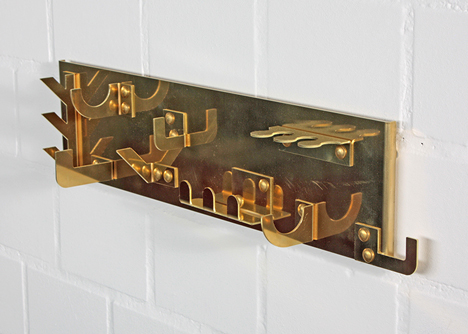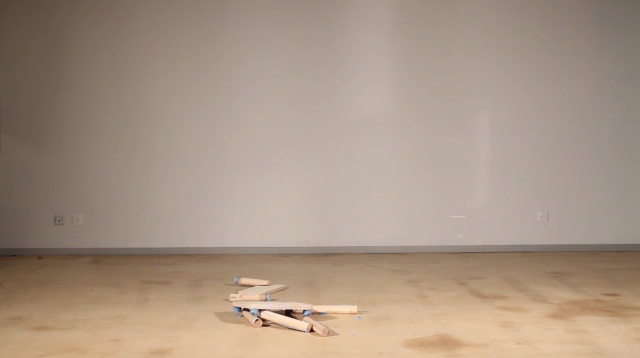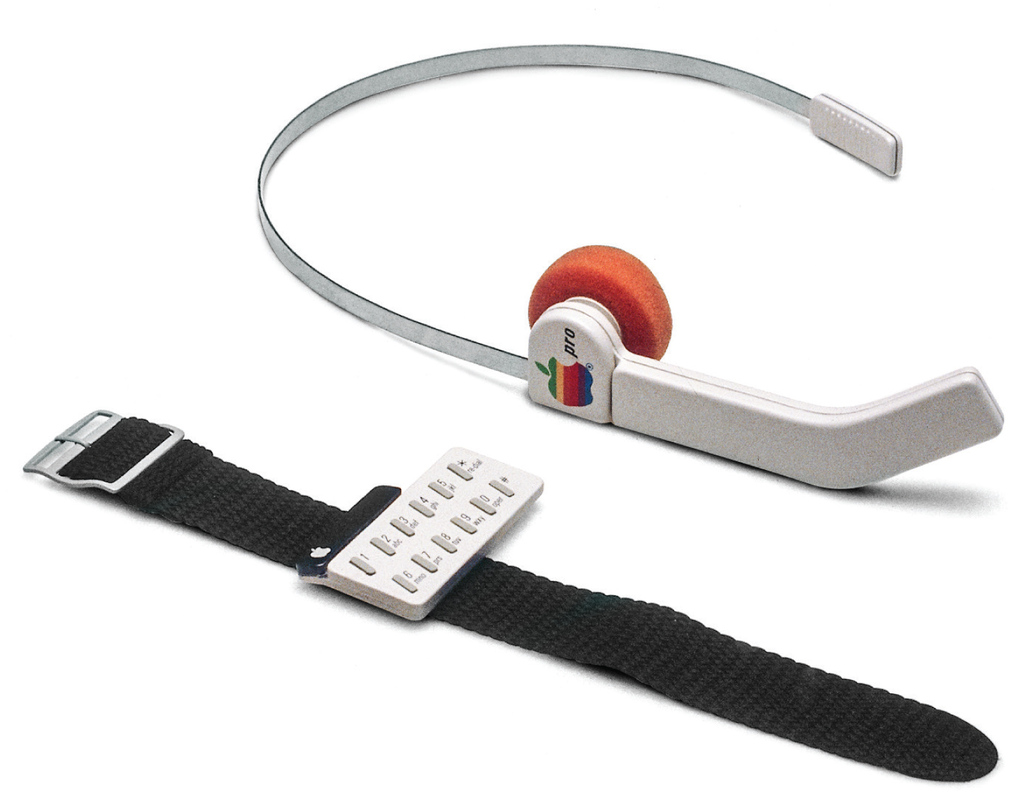Sticky Postings
By fabric | ch
-----
As we continue to lack a decent search engine on this blog and as we don't use a "tag cloud" ... This post could help navigate through the updated content on | rblg (as of 09.2023), via all its tags!
FIND BELOW ALL THE TAGS THAT CAN BE USED TO NAVIGATE IN THE CONTENTS OF | RBLG BLOG:
(to be seen just below if you're navigating on the blog's html pages or here for rss readers)
--
Note that we had to hit the "pause" button on our reblogging activities a while ago (mainly because we ran out of time, but also because we received complaints from a major image stock company about some images that were displayed on | rblg, an activity that we felt was still "fair use" - we've never made any money or advertised on this site).
Nevertheless, we continue to publish from time to time information on the activities of fabric | ch, or content directly related to its work (documentation).
Thursday, July 24. 2014
Via MIT Technology Review
-----
Besides health tracking, contact lens technology under development could enable drug delivery, night vision, and augmented reality.
By Suzanne Jacobs

Last week Google and Novartis announced that they’re teaming up to develop contact lenses that monitor glucose levels and automatically adjust their focus. But these could be just the start of a clever new product category. From cancer detection and drug delivery to reality augmentation and night vision, our eyes offer unique opportunities for both health monitoring and enhancement.
“Now is the time to put a little computer and a lot of miniaturized technologies in the contact lens,” says Franck Leveiller, head of research and development in the Novartis eye care division.
One of the Novartis-Google prototype lenses contains a device about the size of a speck of glitter that measures glucose in tears. A wireless antenna then transmits the measurements to an external device. It’s designed to ease the burden of diabetics who otherwise have to prick their fingers to test their blood sugar levels.
“I have many patients that are managing diabetes, and they described it as having a part-time job. It’s so arduous to monitor,” says Thomas Quinn, who is head of the American Optometric Association’s contact lens and cornea section. “To have a way that patients can do that more easily and get some of their life back is really exciting.”
Glucose isn’t the only thing that can be measured from tears rather than a blood sample, says Quinn. Tears also contain a chemical called lacryglobin that serves as a biomarker for breast, colon, lung, prostate, and ovarian cancers. Monitoring lacryglobin levels could be particularly useful for cancer patients who are in remission, Quinn says.
Quinn also believes that drug delivery may be another use for future contact lenses. If a lens could dispense medication slowly over long periods of time, it would be better for patients than the short, concentrated doses provided by eye drops, he says. Such a lens is not easy to make, though (see “A Drug-Dispensing Lens”).
The autofocusing lens is in an earlier stage of development, but the goal is for it to adjust its shape depending on where the eye is looking, which would be especially helpful for people who need reading glasses. A current prototype of the lens uses photodiodes to detect light hitting the eye and determine whether the eye is directed downward. Leveiller says the team is also looking at other possible techniques.
Google and Novartis are far from the only ones interesting in upgrading the contact lens with such new capabilities. In Sweden, a company called Sensimed is working on a contact lens that measures the intraocular pressure that results from the liquid buildup in the eyes of glaucoma patients (see “Glaucoma Test in a Contact Lens”). And researchers at the University of Michigan are using graphene to make infrared-sensitive contact lenses—the vision, as it were, is that these might one day provide some form of night vision without the bulky headgear.
A Seattle-based company, Innovega, meanwhile, has developed a contact lens with a small area that filters specific bands of red, green, and blue light, giving users the ability to focus on a very small, high resolution display less than an inch away from their eyes without interfering with normal vision. That makes tiny displays attached to glasses look more like IMAX movie screens, says the company’s CEO, Steve Willey. Together, the lens and display are called iOptik.
Plenty of challenges still remain before we’re all walking around with glucose-monitoring, cancer-detecting, drug-delivering super night vision. Some prototypes out there are unusually thick, Quinn says, and some use traditional, rigid electronics where clear, flexible alternatives would be preferable. And, of course, all will have to pass regulatory approval to show they are safe and effective.
Jeff George, the head of the Novartis eye care division, is certainly optimistic about Google’s smart lens. “Google X’s team refers to themselves as a ‘moon shot factory.’ I’d view this as better than a moon shot given what we’ve seen,” he says.
Monday, July 14. 2014
Note: it looks like many products we are using today were envisioned a long time ago (peak of expectations vs plateau)... back in the early years of personal computing (80ies). It funnily almost look like a lost utopian-future. Now that we are moving from personal computing to (personal) cloud computing (where personal must be framed into brackets, but should necessarily be a goal), we can possibly see how far personal computing was a utopian move rooted into the protest and experimental ideologies of the late 60ies and 70ies. So was the Internet in the mid 90ies. And now, what?
Via The Verge
-----
By Jacob Kastrenakes
Apple's focus on design has long been one of the key factors that set its computers apart. Some of its earliest and most iconic designs, however, didn't actually come from inside of Apple, but from outside designers at Frog. In particular, credit goes to Frog's founder, Hartmut Esslinger, who was responsible for the "Snow White" design language that had Apple computers of the ’80s colored all white and covered in long stripes and rounded corners meant to make the machines appear smaller.
In fact, Esslinger goes so far as to say in his recent book, Keep it Simple, that he was the one who taught Steve Jobs to put design first. First published late last year, the book recounts Esslinger's famous collaboration with Jobs, and it includes amazing photos of some of the many, many prototypes to come out of it. They're incredibly wide ranging, from familiar-looking computers to bizarre tablets to an early phone and even a watch, of sorts.
This is far from the first time that Esslinger has shared early concepts from Apple, but these show not only a variety of styles for computers but also a variety of forms for them. Some of the mockups still look sleek and stylish today, but few resemble the reality of the tablets, laptops, and phones that Apple would actually come to make two decades later, after Jobs' return. You can see more than a dozen of these early concepts below, and even more are on display in Esslinger's book.
Friday, April 25. 2014
Before you'll start reading, let me add a missing information: the projects were developed during a full semester by 2nd year bachelor students at the ECAL, under the direction of Profs. Chris Kabel (product design) and Alain Bellet (interaction design).
Via It's Nice That
-----
By Rob Alderson
Léa Pereyre, Claire Pondard, Tom Zambaz: Mr Time (Image By ECAL/Axel Crettenand & Sylvain Aebischer)
It’s laudable that designers are working on worthy projects that will have a practical impact on building a better future, but we’re big believers that creatives should be engaged in making tomorrow a bit more fun too. Luckily for us, there are institutions like the Ecole cantonale d’art de Lausanne (ECAL).
At this year’s Milan Salone, ECAL’s Industrial Design and Media & Interaction Design students unveiled a series of weird and wonderful objects that presented “a playful interpretation take on the concept of the smart home.” These included a clock that mimics the gestures of those looking at it, cacti that respond musically to being caressed, a pair of chairs one of which reacts to the movements of the sitter in the other, a tea spoon that won’t be separated from its mug and a fan that is powered by the amplified breath of the homeowner.
It’s fair to say that some of these creations are completely impractical, but they all raise questions about our future interaction with household objects and they do so in the quirkiest way possible.
Iris Andreadis, Nicolas Nahornyj, Jérôme Rütsche: Ostinati (Image ECAL/Axel Crettenand & Sylvain Aebischer)
Romain Cazier, Anna Heck, Leon Laskowski: Bonnie & Clyde (Image ECAL/Axel Crettenand & Sylvain Aebischer)
Anne-Sophie Bazard, Tristan Caré, Léonard Golay: Il Portinaio (Image ECAL/Axel Crettenand & Sylvain Aebischer)
Léa Pereyre, Claire Pondard, Tom Zambaz: Chiaroscuro (Image by ECAL/Axel Crettenand)
Victor Férier, Ludovica Gianoni, Danièle Walker: Windblower (Image by ECAL/Axel Crettenand & Sylvain Aebischer)
Megan Elisabeth Dinius, Timothée Fuchs, Antoine Furstein, Bastien Girschig: Voodoo (Image by ECAL/Axel Crettenand & Sylvain Aebischer)
Pierre Charreau, Martin Hertig, Pauline Lemberger: Cactunes (Image ECAL/Axel Crettenand & Sylvain Aebischer)
Thursday, February 06. 2014
Via Beyond the Beyond
-----
"Launching the Wolfram Connected Devices Project"
January 6, 2014
“Connected devices are central to our long-term strategy of injecting sophisticated computation and knowledge into everything. With the Wolfram Language we now have a way to describe and compute about things in the world. Connected devices are what we need to measure and interface with those things.
“In the end, we want every type of connected device to be seamlessly integrated with the Wolfram Language. And this will have all sorts of important consequences. But as we work toward this, there’s an obvious first step: we have to know what types of connected devices there actually are.
“So to have a way to answer that question, today we’re launching the Wolfram Connected Devices Project—whose goal is to work with device manufacturers and the technical community to provide a definitive, curated, source of systematic knowledge about connected devices….”
(((Gosh there sure are lots of them.)))
http://devices.wolfram.com
Thursday, January 09. 2014
Still online in 2014...
From the Cybernetic Meadow Collection of the Consortium for Slower Internet. Therefore and from now on, it seems that concrete means "slow", "heavy" and "out of the cloud"! (it once meant "modernity")
I enjoy their "products" presentation that make fun of the recent evolutions of our electonic environment: " Purchase additional drives as your storage needs grow. No monthly fees, no terms of service." & "The Consortium for Slower Internet does not participate in PRISM." Can you see how personal computers and storage were in fact utopian?
So, if you didn't get it for Christmas, just buy it for yourself now, it's still time!
Via The Consortium for Slower Internet
-----
Heirloom JPEGS



Drop out of "the cloud" with this concrete photo display and 16gb USB drive.
- Comes with one uniquely distressed concrete USB flash drive.
- Purchase additional drives as your storage needs grow. No monthly fees, no terms of service.
- The Consortium for Slower Internet does not participate in PRISM.
- Cork lined bottom with solid oak slats.
- Perfect for 4" x 6" prints or smaller from printstud.io or printstagram.
Wednesday, September 04. 2013
Via Dezeen
-----

German designer Samuel Treindl has made a clock, lamp and other products from shapes cut out of existing furniture.

Samuel Treindl from Münster in Germany used what he called a "parasite strategy" to create new products from existing furniture items and intends for the final pieces to reflect the manufacturing process.
In the collection - called Parasite Production - Treindl created a clock from material cut from a peach cabinet and a desk lamp from shapes cut out of an Ikea PS cabinet.

More recently the designer cut a range of components such as a hooks and hinges from a brass book shelf.

His process means that the original cabinets can still be used. "In order to work in a more economic way, I superimpose different objects on a single metal sheet," said Treindl. "So the same material would be used twice."

All of the objects have been produced in Germany as limited editions. Triendl's work will be exhibited at London's Mint Shop during London Design Festival next month.

Parasite Production was first shown as a prototype at the SaloneSatellite showcase for young designers at the Salone Internazionale del Mobile in Milan in April, that also featured squishy lamps made out of rubber by Thomas Schnur.

Photographs are by the designer.
Here's a full project description from Treindl:
Parasite Production
This work is based on a parasitic strategy. The cabinets and other products are produced simultaneously. The results therefore reflect the manufacturing process and history of the production.
As a producer and designer I have to pay attention to the manufacturing of a product, but also to offcuts and loss of material.
In order to work in a more economic way, I superimpose different objects on a single metal sheet. So the same material would be double used. And the question is, where is here the rest? According to which other objects are currently produced, the obtained ornaments as well as the thickness of the material of the shelf can differ.

Example: If an industrial company produces spoons and forks, I will make a spoon shelf. If lamps are produced, I make a lamp cabinet. That way, I don't want to design furniture, but I create a process which uses industrial production for generating and designing objects.

Material: brass steel, aluminum, powder-coated, laser cutting method. The IKEA PS cabinet/lamp was hand-cut.
Via Dezeen
-----

A 3D printer approved by NASA will be flown to the International Space Station next year so astronauts can print components, tools and equipment on-demand in space.
More about it HERE.
and HERE.
Wednesday, March 20. 2013
Via Creative Applications
-----


Created by ECAL‘s past and present students, DRM Chair provides a limited number of use before it self-destructs. A small sensor detects when someone sits and decrements a counter. Every time someone stands up, the chair knocks a number of time to signal how many uses are left. When reaching zero, the self-destruct system is turned on and the structural joints of the chair are melted.
The number of use was set to 8, so everyone could sit down and enjoy a single time the chair. The cast-wax block is embedded with nichrome wire, the sensor made with Arduino counts the people and number 8 is reached the system is turned on.
The project is an entry for thedeconstruction.org and made in 48 hours by Gianfranco Baechtold, Laurent Beirnaert, Pierre Bouvier, Thibault Brevet, Raphaël Constantin, Lionel Dalmazzini, Edina Desboeufs, Arthur Desmet and Thomas Grogan
More about the project here.
Personal comment:
And of course, we would be all delighted to buy such a product, and buy it expensive, several times, don't we?
-
I truly believe computers, information technologies and networks have brought a lot to society, have transformed it and will continue to do so in conjunction with other "forces". The good side of these changes are blogs of passionate people, projects like Wikipedia, shared knowledge, home/personal computers, open source and unbranded communities, connection to others, diversity, etc. We all love this.
But on the other side, there is also since the beginning of the industry a terrible business model that come along with computers, information technologies and networks that has done a lot of damage. It is the "this year we put a 12 on the box" business model. Sounds like an old model at the time of "clouds" but it is in fact the same model that is being revamped and improved. A model where you are kept captive of an ecosystem of services and products, where you have to pay many times for the same service or product, where you trade your personal data against services that you even don't know what they will become (Google just decided to shut down Reader after several other unilateral shut downs --they won't give you back your data though... which would be at least fair trade--, last year Pachube was sold to a private company, Sketchup just got sold, etc. & etc. the list is endless).
When computing could have become a solution to consume less matter, offer great services, be a truly horizontal system, it has evolved into one of the symbol of stupid consumerism and often shit content (how can it be that a 3 years old "brand new and wow computer" or a "smart smart phone" has no more value after three years and that it all end up in the trash like vulgar pieces of waste? How is it that I can just listen to my music on only 5 devices? How is it that I have to pay every year 2000$ to have access to bad updates of programs? etc.) This industry is now on the point to restore the "good old" pyramidal model (branded "clouds" are in fact highly centralized and pyramidal systems). That's bad.
I never liked the capitalist or the liberal economic model and when it come to its mix with the computing industry, I think it has produced one of the most stupid and wasteful model ever seen...
So, where do we go from now?
Wednesday, January 16. 2013
Via Pasta & Vinegar (via beta knowledge)
-----

“Hugo Gernsback wearing his TV Glasses in 1963 Life magazine shoot.”
|









































